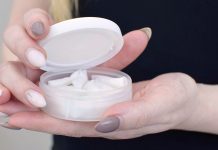
The wearable cardiac devices market was valued at more than $1.2bn (€1.02bn) in 2019 and is likely to expand at a healthy CAGR of 24.2%, reaching $6.4bn by 2026.
According to a research report by Global Market Insights Inc., the increasing adoption of wearable technology across the healthcare sector is likely to drive the global wearable cardiac devices market share. In addition to this, the rising demand for the use of non-invasive devices is also expected to push product adoption over the coming years.
The latest wearable devices, which come as skin patches, are non-invasive, lightweight, and small. Owing to these characteristics, the patients do not have to endure painful implantation procedures to obtain the capability to record their cardiac parameters continuously. Technological advancements towards further amplifying these characteristics through the innovation of new, more efficient products is also augmenting the market share. For instance, in May 2020 a necklace that is capable of detecting abnormal heart rhythms was showcased for the first time on the EHRA Essentials 4 You, which is a scientific platform of ESC (European Society of Cardiology). Such product innovations are expected to outline industry trends over the coming years.
This growing focus on the user-friendly and non-invasive nature of these wearable devices is expected to make them more popular among patients and significantly influence product demands, which would subsequently fuel a widescale shift towards wearables over the forthcoming years, driving industry growth.
Rising demand for defibrillators
With regards to product, the market is bifurcated into patch, Holter monitors, defibrillators, and others. Of these, the defibrillators segment is expected to expand at an impressive CAGR of more than 22% through the analysis period. According to the WHO (World Health Organization), approximately four out of five cardiovascular-related deaths are caused by heart attacks or strokes.
Wearable devices such as the Zoll LifeVest Wearable Defibrillators, which monitor the heart rate of a patient vulnerable to a stroke or heart attack and gives an electric shock if the patient fails to respond to multiple warnings, help patients with high heart attack risks by taking timely measures, particularly in the absence of a cardiologist, offering significant potential for segment expansion.
Increasing adoption in home healthcare applications
In terms of application, the market is classified into home healthcare, remote patient monitoring, and others. Of these, the home healthcare sector represented a significant revenue share of approximately 25% in 2019. Effective monitoring in homes, easy handling, and greater convenience are some of the most prominent features pushing the use of wearable devices in the segment.
Moreover, growing disposable income levels and fewer visits to healthcare facilities are further adding up to the industry growth and are likely to greatly influence customer preferences, driving the market outlook.
Evolving digital health industry in North America
The wearable cardiac devices industry in North America is expected to see significant growth through the forecast timeframe, led by the US. The regional industry represented more than 60% of the market share in 2019 with projections expecting it to expand exponentially. The increasing number of new industry players and the launch of new, innovative devices is a primary driving factor that is fostering the product demand in the region.
The evolving digital health sector in the US would add up to the regional market outlook through the projected time. Rising awareness regarding wearable technology among the regional population would further fuel deployment of the products over the coming years.







